Durham Market Place
Statue In Durham, County Durham
A gem of a market place with interesting sculptures, some secret creatures, and a timeline.
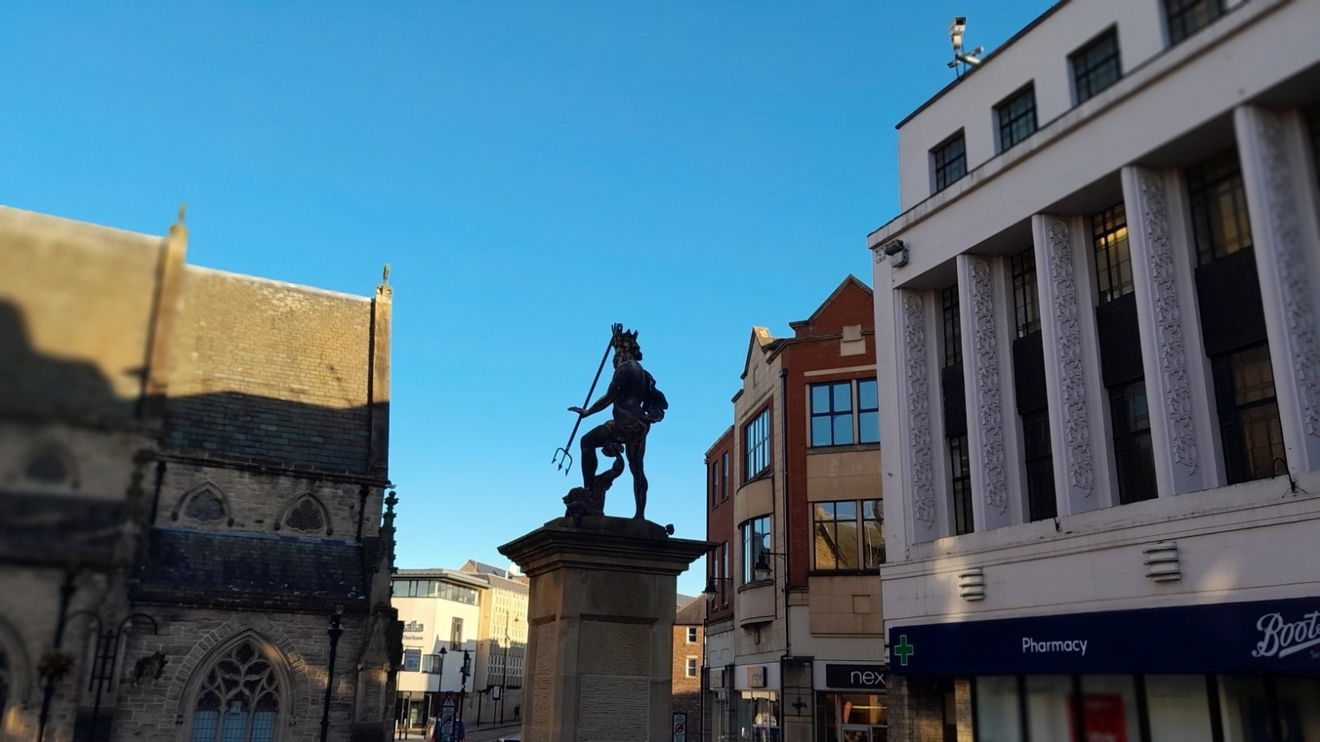
Can you remember your first visit to Durham Market Place? If you have not yet been, it has an impressive array of buildings and sculptures. This post is about the Market Square and the buildings will have their posts, eventually.


The Market Place is a convergence of several streets; Silver Street, Saddler Street, High Street and Claypath.
The first mention of it is a grim one. In 1040 the heads of Scottish marauders were displayed on poles around the Market Place. The exact site is not known.
In 1133 the Church of St Nicholas was built. He is the Saint of Merchants among many other things. It is worth noting that part of the former cemetery of the church lies beneath the marketplace, so the sculptures/monuments had to be carefully arranged, so as not to be placed on a grave.
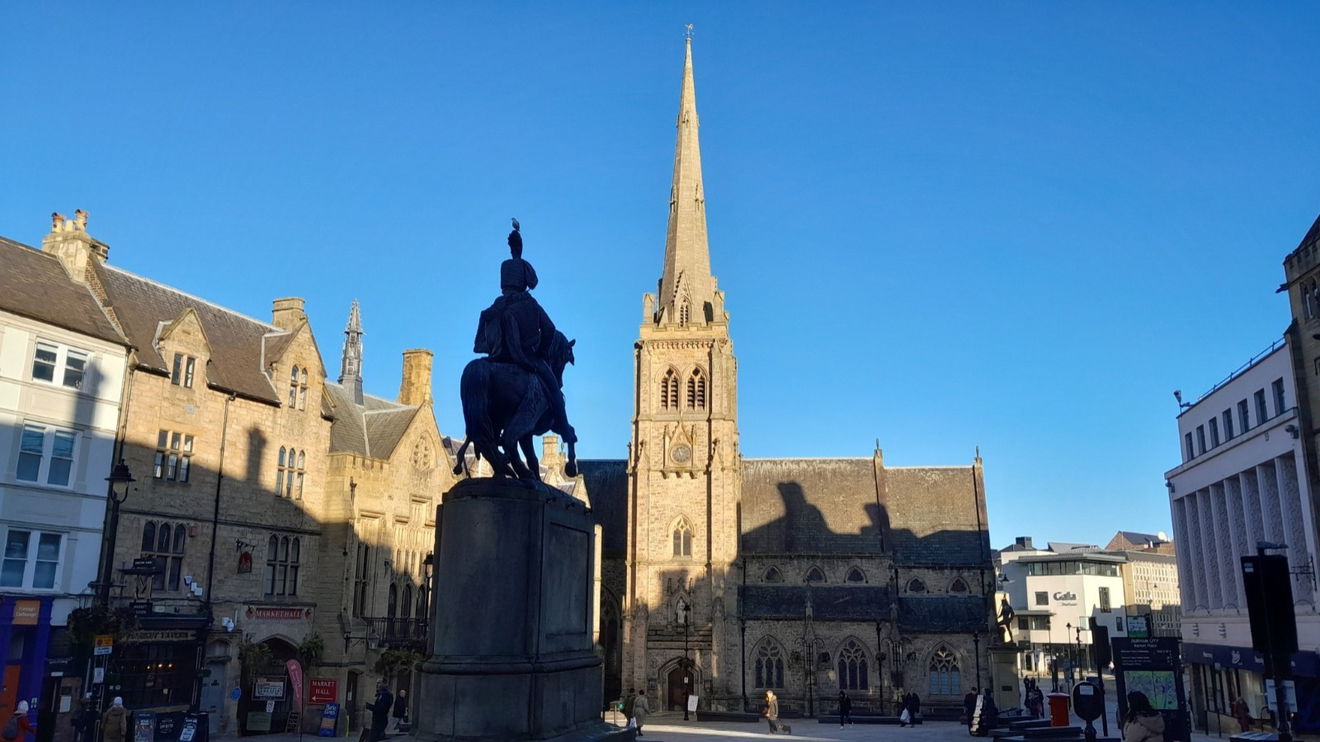
Market day was Saturday after William Wharton (Of Wharton Park fame) established the Durham Market Company in 1851. Trading finished at 11pm with the ringing of a bell which can still be seen by the stairs in the Market Hall.
There were also fairs held for horses, cattle, and sheep trading, and twice a year a servant's hirings.
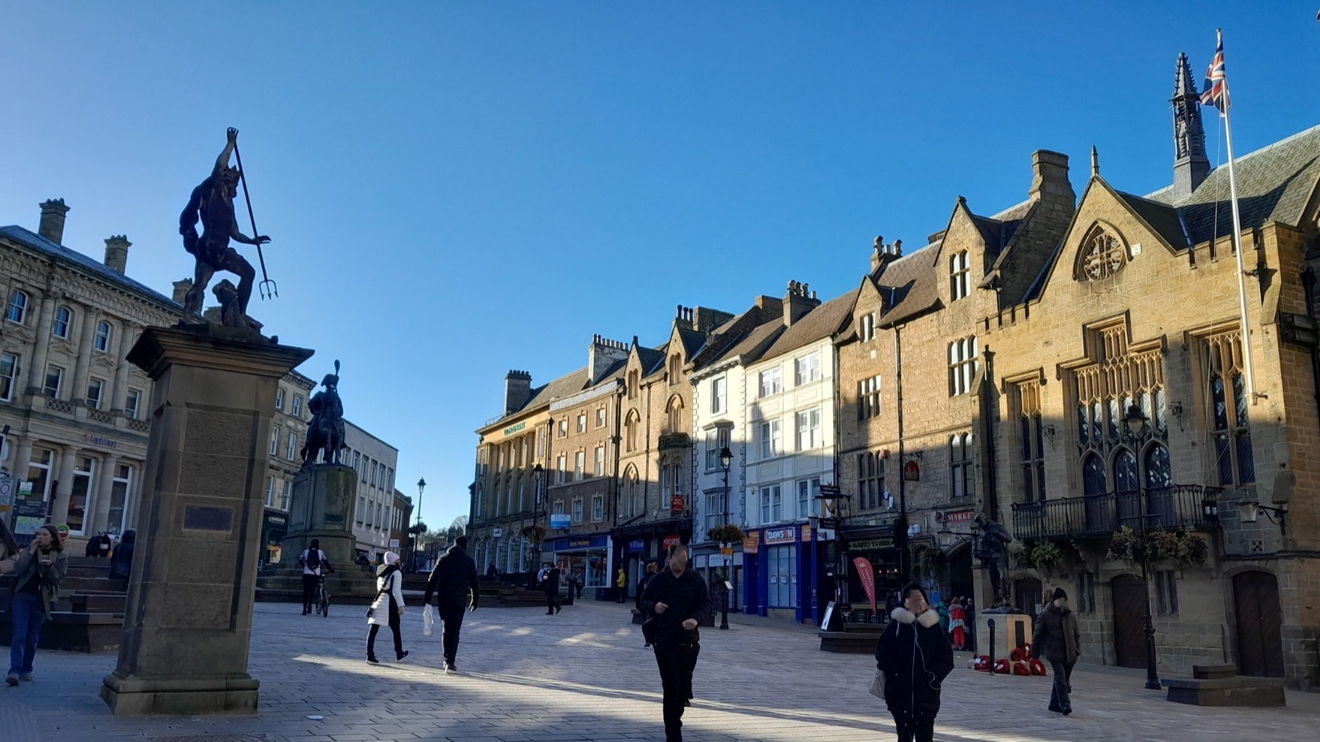
The Hussar on the horse is certainly noticeable. This is Marquis Charles William Vane Tempest Stewart (Marquis of Londonderry III). He was a commander for the Duke of Wellington.

The Marquis of Londonderry III is depicted here in Durham city's Market Square on horseback. He is considered very much the villain of the Londonderrys. He married the very wealthy Lady Frances Anne Vane-Tempest and as agreed in her father's will, took the name too. He only inherited the title Marquis after his childless brother-in-law (2nd Marquis) committed suicide. Lord Londonderry was also created Earl Vane and Viscount Seaham, as if Lord and Marquis were not good enough titles!
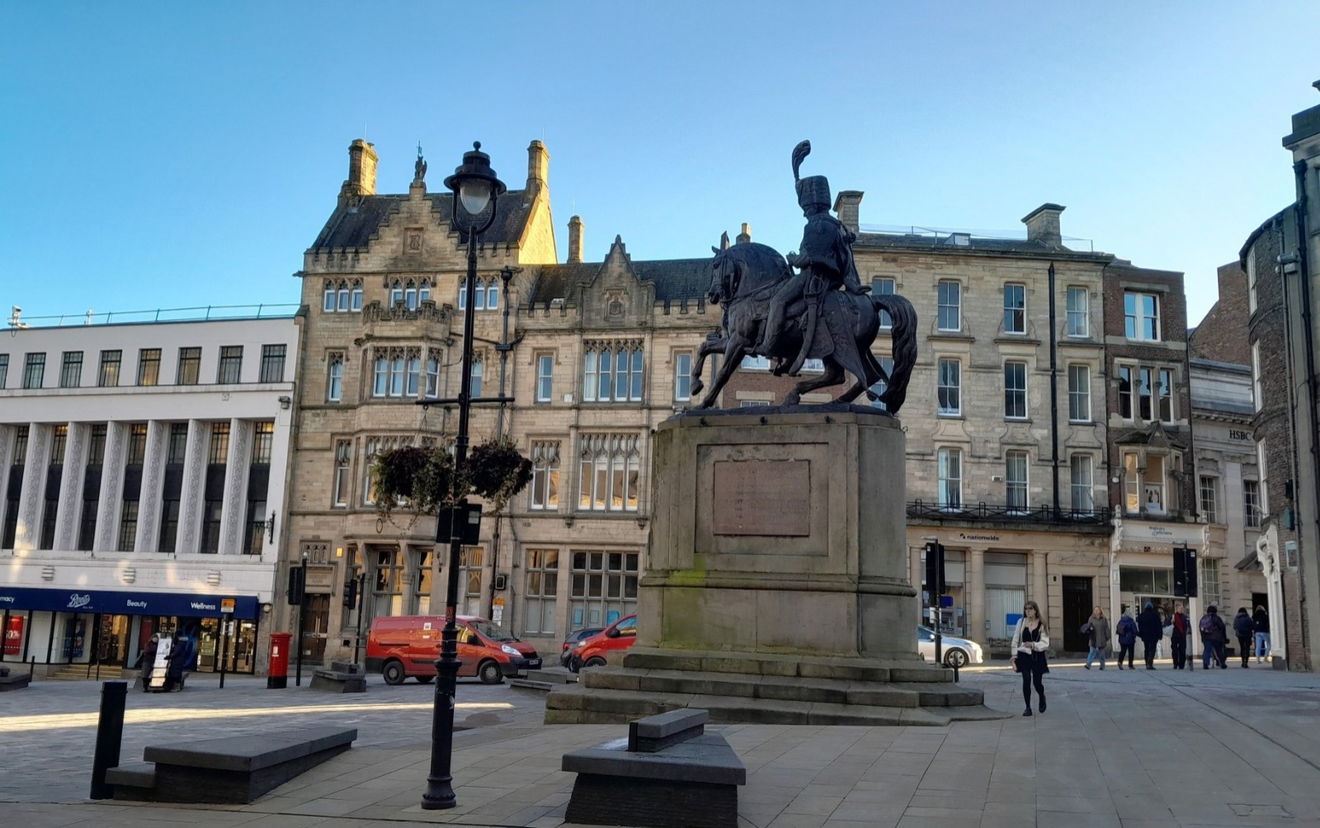
Charlie spent £130,00 (Over £ 16 million today) on having Wynyard Hall built in 1841, just as it was being completed the interior was engulfed by fire and was gutted. Some say justice as he opposed the Mines and Collieries Act which forbade women, girls, and boys under 10 years old from working down pits. Apparently, he got into quite a rage in the House of Lords.
In 1845 he was one of the ten richest people in the United Kingdom. This was the period of the Irish Famine. Stewart Vane Tempest was Irish and had property there which he preferred to spend money on and not help the struggling potato farmers. He also had no compassion and evicted many.
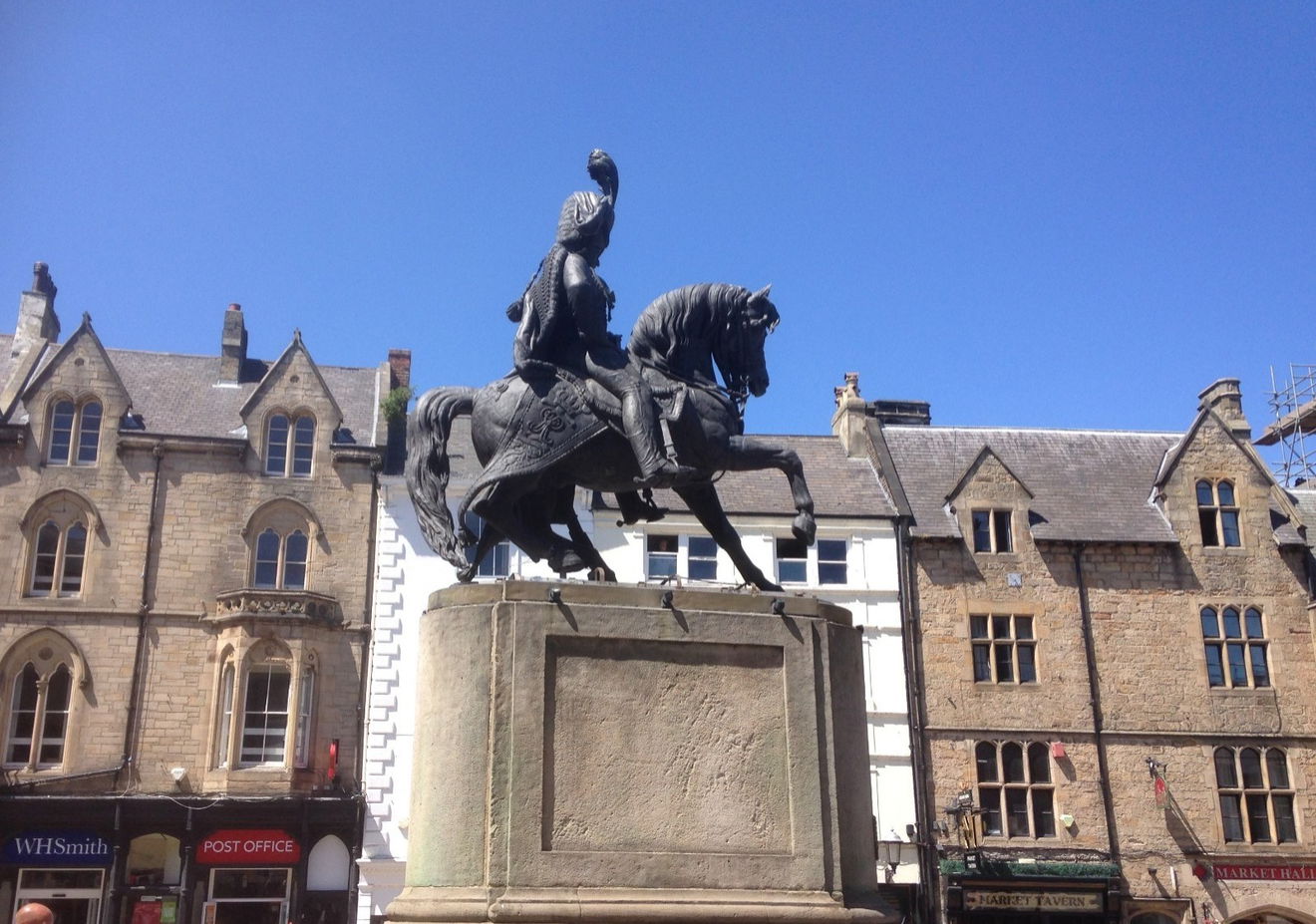
After his death, his wife raised subscriptions for a statue and they were met easily by the higher society. The artist Raphael Monti (1818 to 1881) was commissioned and used a new technique of electroplating copper over a plaster base. Some say this is the largest example of the electroplating technique.
The 1861 unveiling was met with disapproval. This twice-sized model was not welcomed, and nobody wanted it elsewhere; It was suggested to place it on the Palace Green but the clerics declined, so it stayed in the Market Place. It has been moved from its original setting.
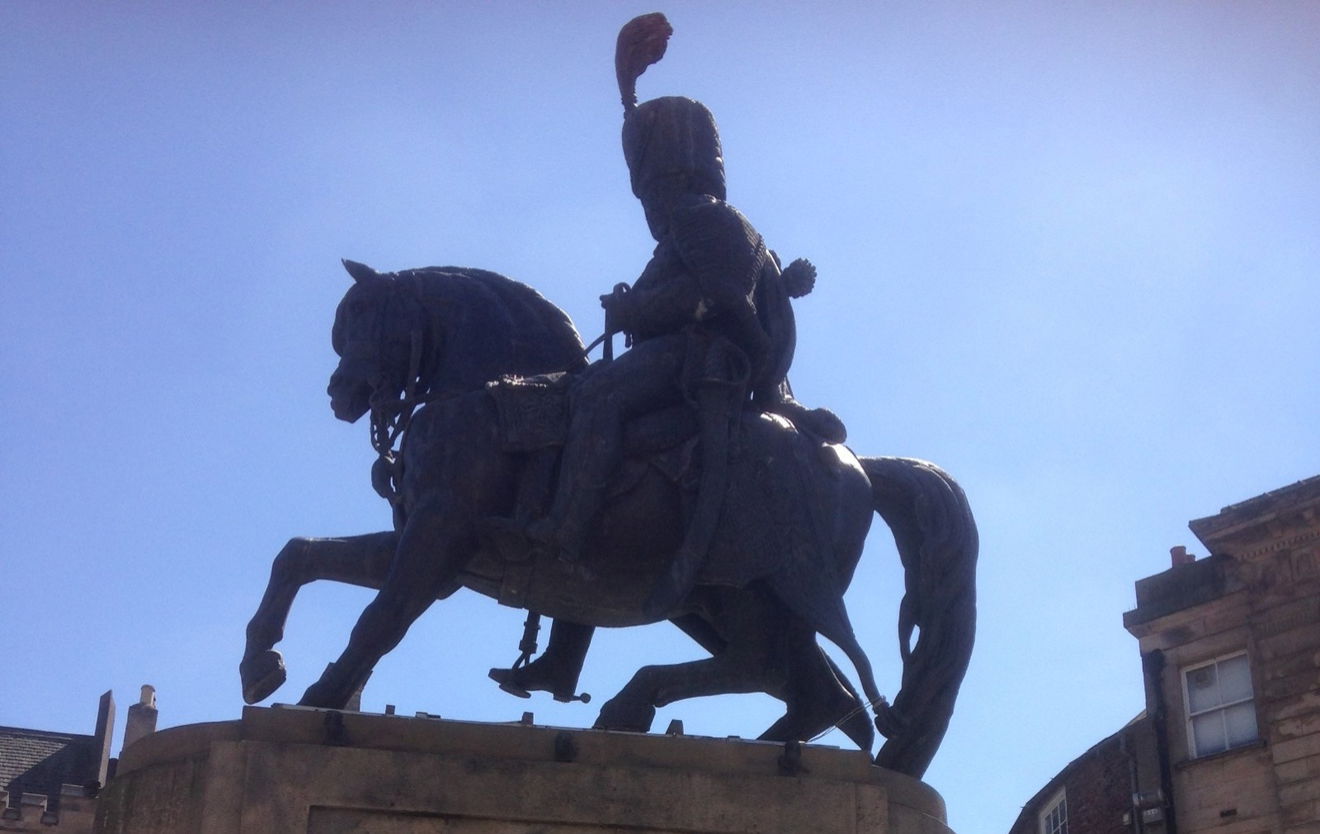
Neptune is the oldest statue in the Market Place. It was constructed in 1729 out of stone covered in lead. George Bowes Of Bowes fame financed it as he was mayor at the time.
There were proposals to improve the navigational route on the River Wear, therefore turning Durham into a port, and Neptune serves as a reminder of this. It had a pant (drinking vessel) that was fed from Framwelgate well, near Crook Hall.
It all got moved to Wharton Park in 1923 when the water was no longer required, although one report states because of the increase in traffic. Neptune returned in 1991 by popular demand, however, the pant didn't come with him.
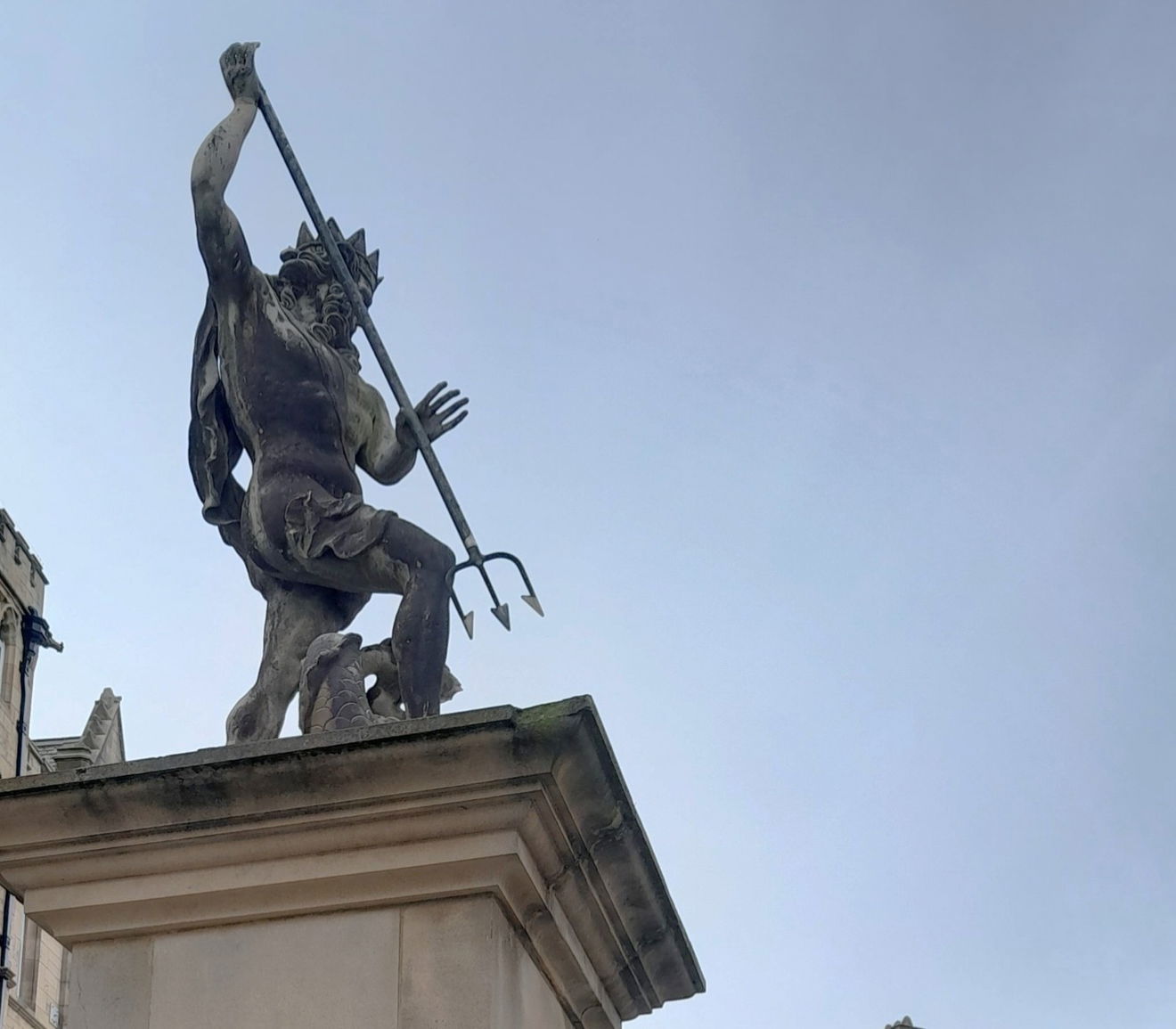


The Durham Light Infantry Soldier statue was unveiled in 2014 and is cast in bronze.
This is a replica of one at the National Arboretum in Staffordshire that was unveiled in 2012. The statue is based on a photograph of Colour Sgt Brandon Mulvey, from Chester-Le-Street, who was 18 years old at the time. Edinburgh artist Alan Beatie Heriot is the sculptor. It symbolises an infantry bugler sounding the ceasefire in 1953 in Korea. This was to be Durham Light Infantry's last battle honours.


There are many good reasons to remember the Durham Light Infantry and pay your respects. One reason is that in World War I, it is said they fielded the most soldiers from a British regiment to the cost of 12,000 lives.
11 Victoria Crosses were awarded.
The quote on the back of the plinth by General Montgomery of Alamein reads:
'There may be some Regiments as good but I know of none better'
Trial holes were dug around the Market square until a suitable spot was achieved so as not to disturb any graves as previously mentioned.
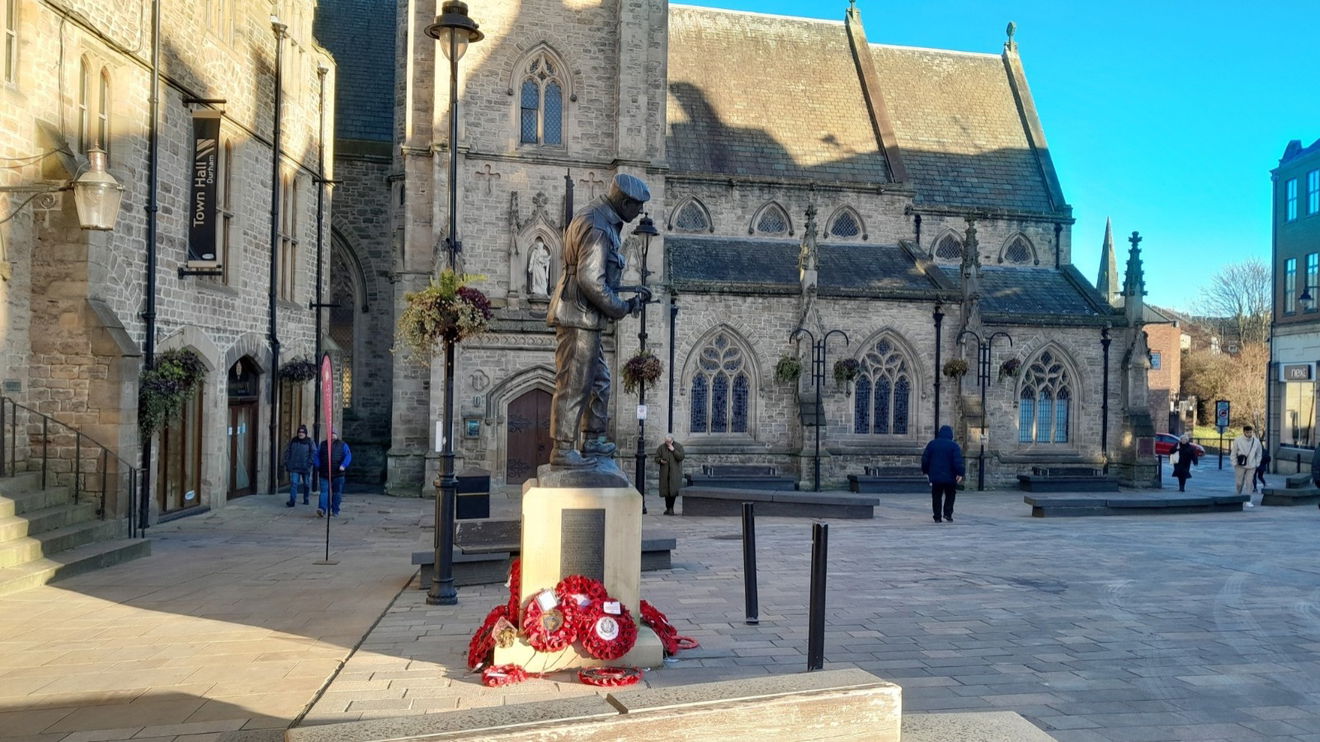
As a bit of fun, it is worth spotting the secret creatures around various parts of the Market Place.


The artist Annette Poulson contacted me via a post on Facebook and wrote:
'In 1999 Durham city arts commissioned me to make creatures that would inhabit lamp posts and hanging baskets in Durham City Centre. Here's the parrot in its youth'
There was also a Parakeet which has since flown away.


Here is what Annette wrote about the process.
'I chose the creatures based on what I thought would be interesting to make, would provoke curiosity in viewers and that it would be fun in a particular setting. It was a light hearted project.'
On making them Mrs Poulson wrote:
'Size was abitary. They're made of clay, fired to stoneware temperatures.'
Can you see this little monkey?
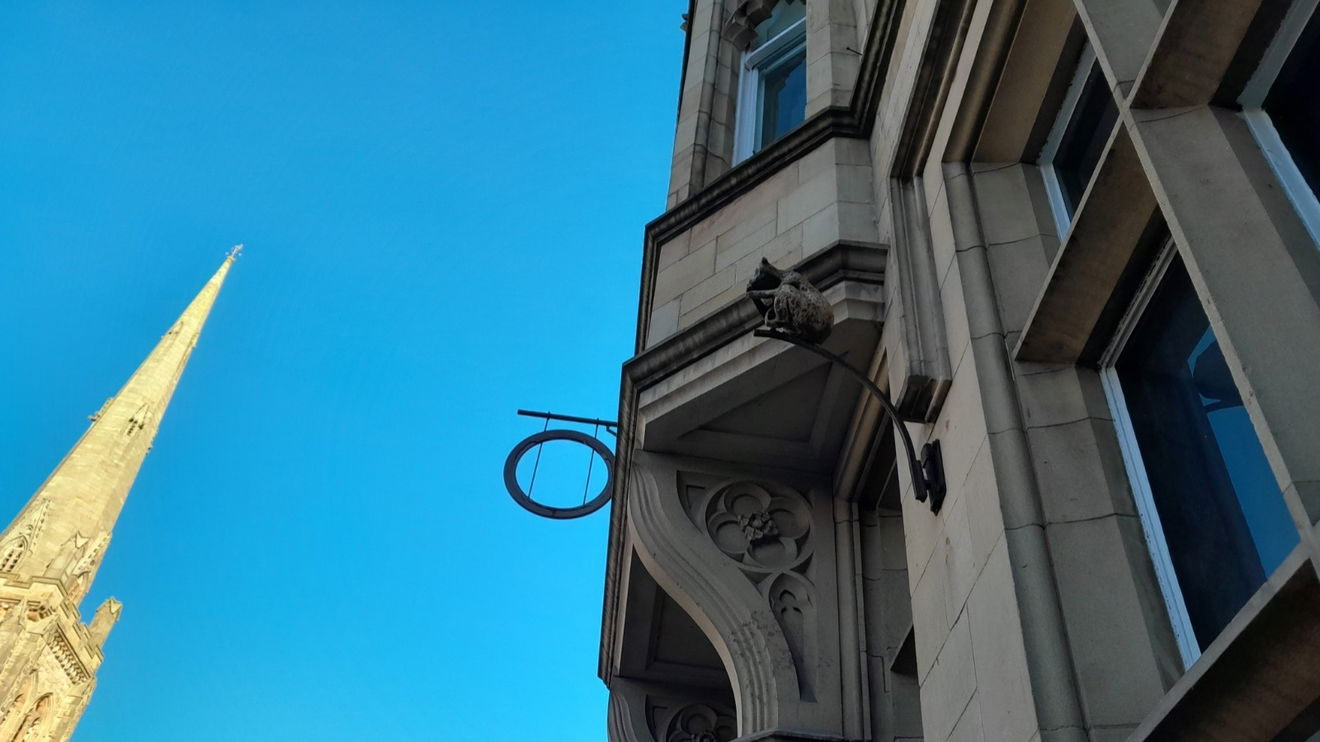


The parrot was unfortunately knocked from its perch by scaffolding and was smashed up in 2023, so this is the reassembled parrot which Annette wrote:
'I had nothing to do with the re installed parrot. I'm surprised it was strong enough to be trusted not to fall on the head of a passing tourist after 23 years.'
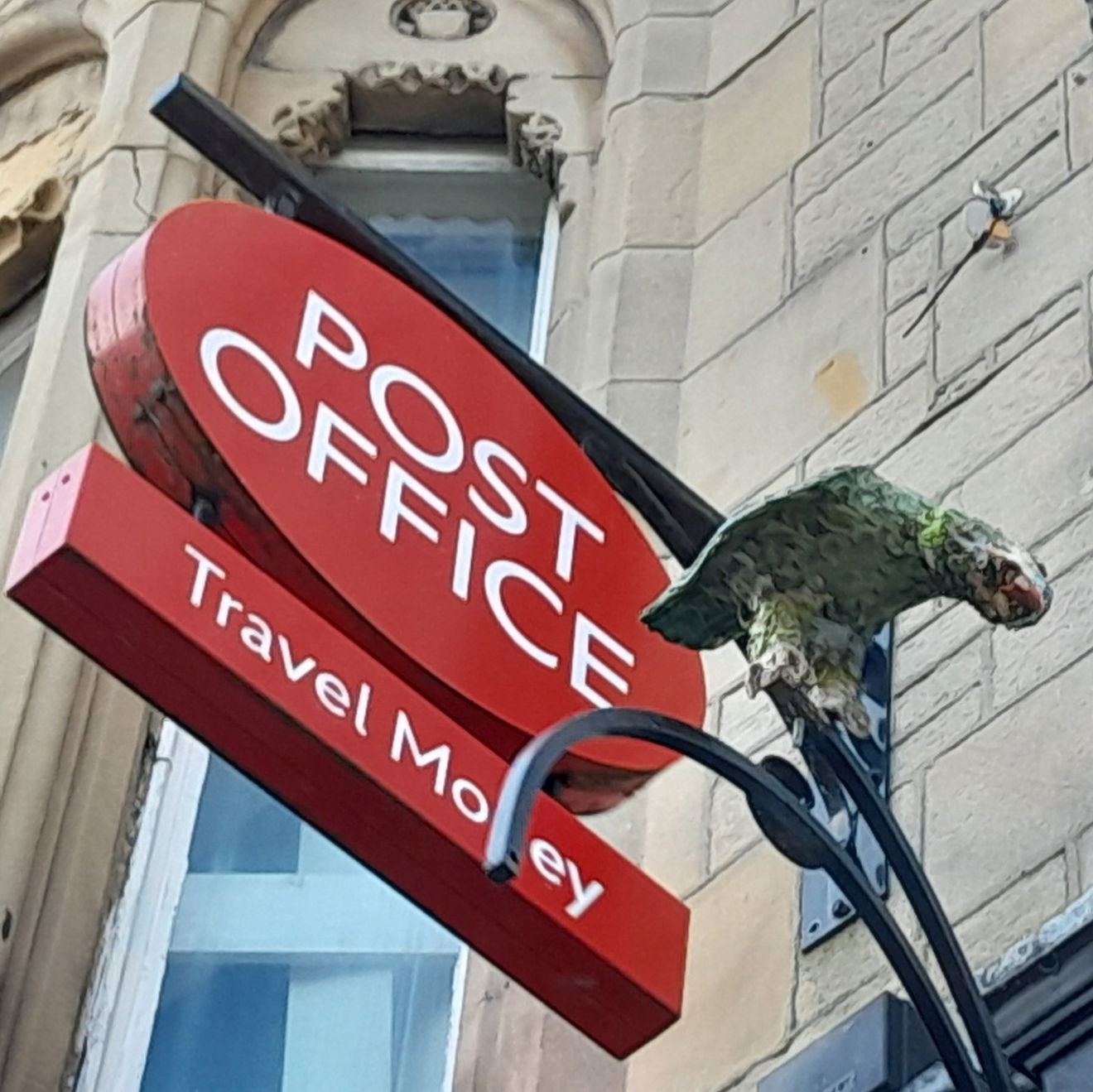
Annette sent a photo of a leaflet that was used by schools and the Tourist Office. Unfortunately, quite a few are now missing.


The Heritage timeline beneath your feet gives the history of Durham in 42 metres of granite paving stones that make a straight line from the Church of St. Nicholas to the statue of The Marquis of Londonderry III.
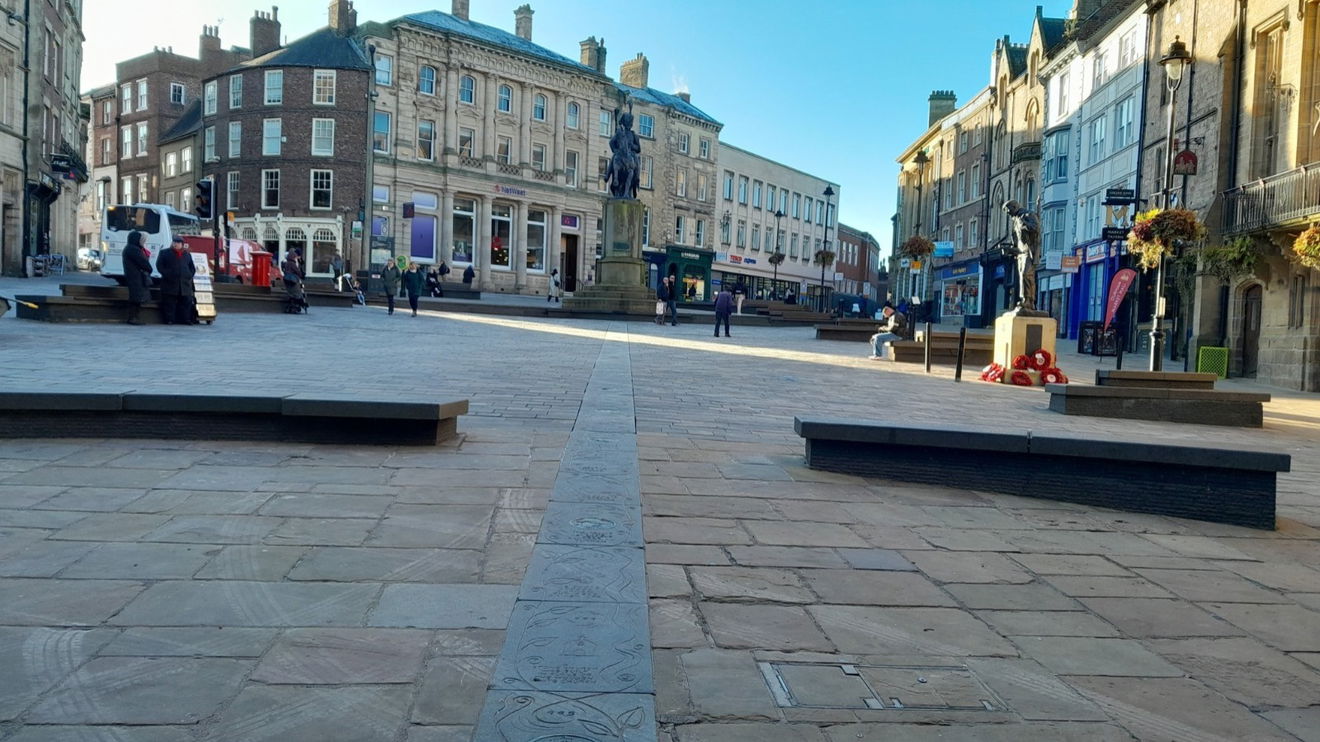
They have attractive bronze reliefs, a flowing river and flower theme. Most have details.




A young lad called Stefan Szabewski came up with the idea and wrote to The Newspaper The Durham Times in 2009 as they had asked for ideas to regenerate the area. His idea came to fruition and he unveiled it in 2011 as a 10-year-old. I understand Stefan is now an assistant professor and a running athlete.
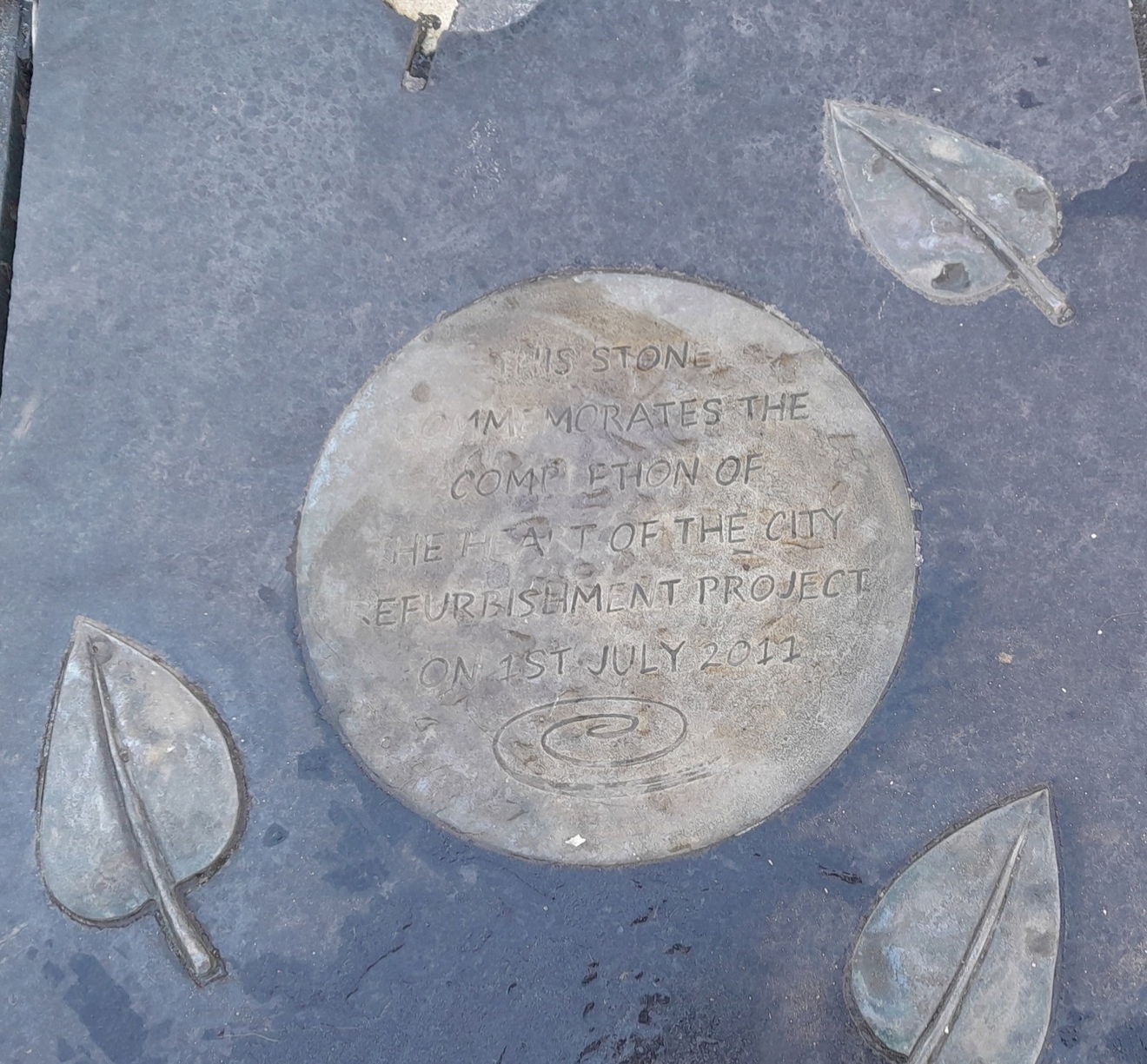
So allow a bit of time when visiting as there is a feast of culture here.
Get 2 points if you have visited this place. Already visited by 260 VIPs.
Login to the VIP area to add places to your bucket list, mark them as visited and more importantly see where you rank on the league table.
How To Find Durham Market Place
Where Is Durham Market Place ?
Lat / Long
54.7771, -1.575547
What three words
Where To Park For Durham Market Place ?
Lat / Long
54.771413, 54.771413
What three words
There is a multistory car park called Prince Bishops nearby. I prefer to park near to St Oswalds Church and have a pleasant walk down and up to the market place.
Contributed by Rosalind Parker
Thanks for reading through and getting to the end of this post. I enjoy exploring the Fabulous North (Especially as a Southerner residing up North). I like 'snippets' of information, and more so, if they are obscure, amusing or meaningful. The photographs are taken on a mobile phone, without any enhancements.
More Places from Rosalind
More Places In Durham
Find more fabulous places in Durham, County Durham and if you know of a place we haven't listed, then let us know.

Analemmatic Sundial At Durham University
Art Durham County DurhamAn art/science installation involving audience participation and sunshine.
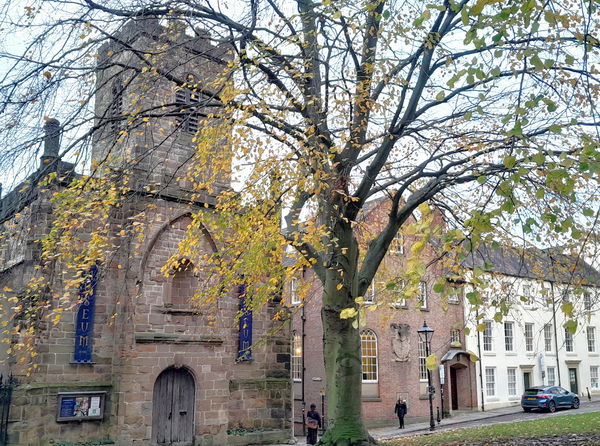
Durham Museum and Heritage Center.
Museum Durham County DurhamFormer St Mary le-Bow Church, hosting displays on Durham history.
More Statues
So this statue wasn't enough and you want more? Don't worry we have you covered.

Not Much To Ask War Memorial
Statue Sedgefield County DurhamA World War I memorial of a six foot soldier, with his rifle lowered, taking a drink from his canteen by Ray Lonsdale.

Eleven O One
Statue Seaham County DurhamA statue of a British infantryman commemorating the end of World War 1.

The Response
Statue Newcastle City Centre Tyne And WearA war memorial to the Northumberland Fusiliers sited on the grounds of St Thomas the Martyr Church at Barras Bridge, depicting the spirit and patriotic confidence that swept the nation at the outset of war in 1914.
Never Miss A Fabulous Place
If you are afraid of missing out on all the fabulous places we post, or just want to be the first to know, then sign up to the Fabulous North.
Each week we will email you all the brand new places that we visit.
Sign Up To AlertsFind Us On Facebook
We post all our new places daily on our Facebook Groups page, so join the group today and be notified when we add a new place.
Join Our Facebook GroupDurham Market Place was listed in Statue // County Durham // Durham


